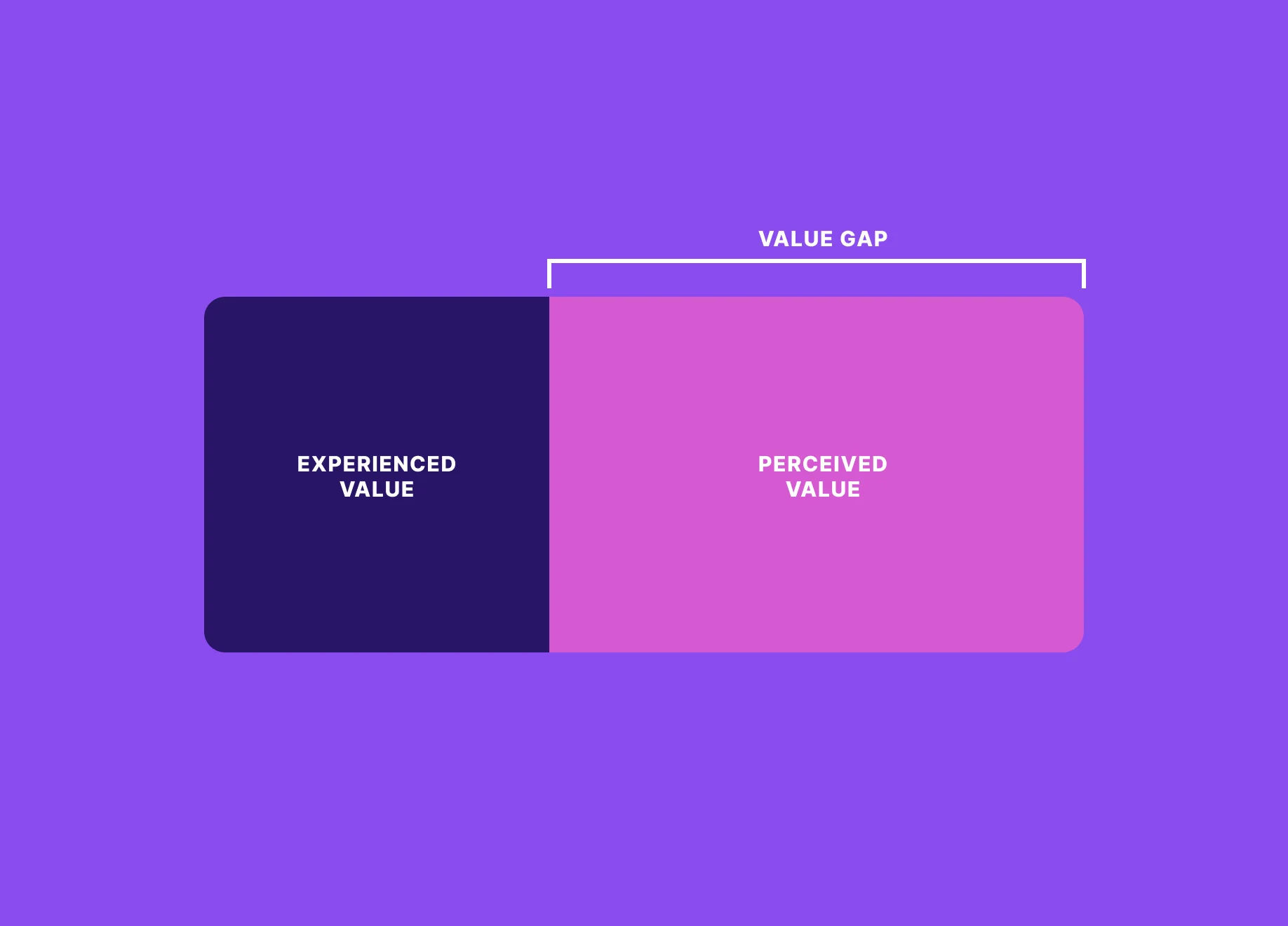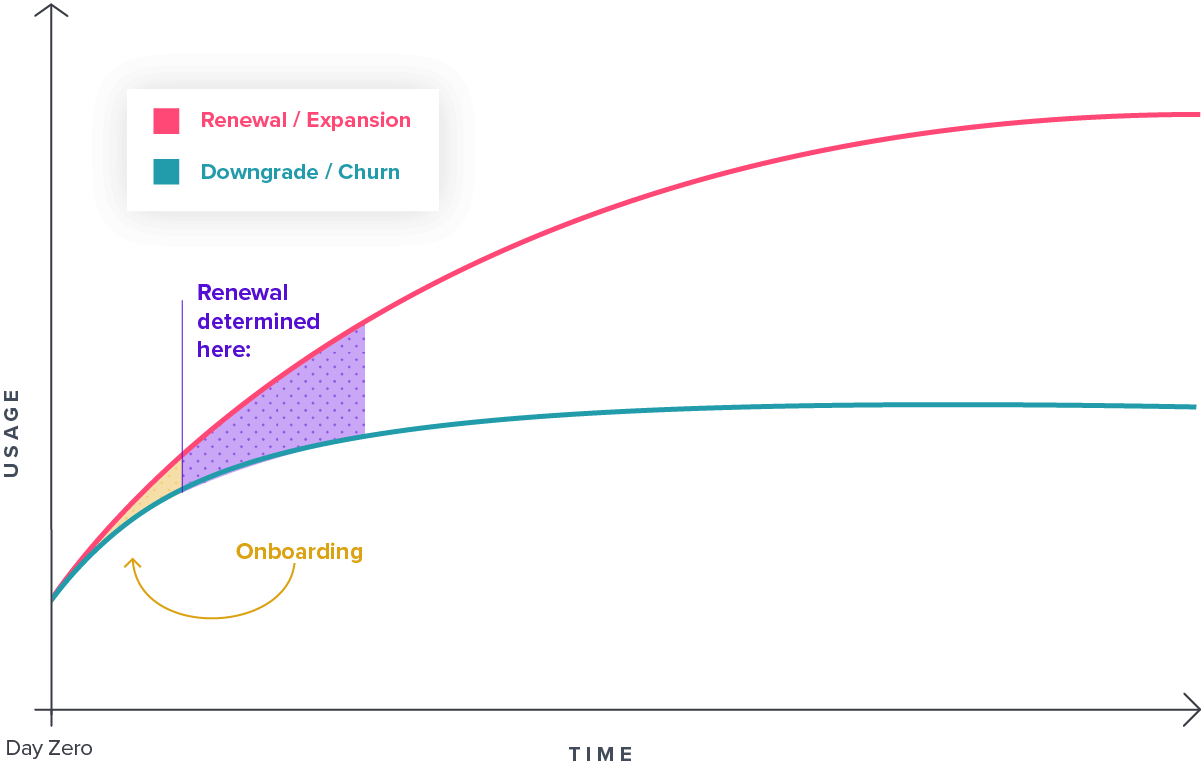目次
価値のギャップとは?
The value gap occurs when the perceived value and experienced value for a software product don’t overlap, creating a “gap” between the user’s expectations and reality. In Pendo’s product benchmarks report, researchers found that only 30% of users exhibit regular usage in the first 90 days of using a new product, which suggests that most users are not experiencing the value they anticipated at purchase. Often the problem isn’t that new users are incapable or the product is insufficient, but rather that there is an educational barrier preventing customers from discovering value in the app.
価値のギャップが重要な理由
If new users can’t easily find value in a product, they are likely to abandon using it altogether, especially since the rise of SaaS applications has made switching costs extremely low. Companies need to remember that customer churn doesn’t happen when the contract ends—it happens when users no longer find your product useful or valuable.
プロダクトの価値のギャップを最小限に抑える方法
In order to close (or prevent) the value gap, companies need to implement an effective onboarding experience so that new users learn and find value in the product as quickly as possible. Although there are many ways to administer onboarding, many companies are turning to an in-app approach. With in-app onboarding, companies are able to provide contextual information to new users as they navigate the product, and help them utilize the functionality that’s most relevant to them.
Citrix, for example, used product analytics to identify a certain trial usage pattern that converted to paying customers at a higher rate than others. The team then created an in-app onboarding flow that steered trial users toward those particular features, and was able to increase their trial conversion rate by 28 percent.
Here are some best practices for building an effective in-app onboarding strategy:
- シンプルに保つ:オンボーディングのフローをできるだけシンプルにするようにしてください。ユーザーが最初にログインしたときに、ユーザーがプロダクトの使い方に戸惑うようなことがあってはなりません。
- 異なる学習スタイルに対応する計画を策定する:学習方法は人それぞれであるため、複数のフォーマット(動画、イラスト入りウォークスルーなど)を用意し、ユーザーがオンボーディングを進められるよう配慮します。(例:好きな順番でトピックを探せるようにするなど)
- 可能な限りパーソナライズする:自社のプロダクトが複数のタイプのユーザーに提供されている可能性が高いため、アプリ内のオンボーディングを、さまざまなユーザーセグメント、そのユーザー固有のニーズ、成功の促進に必要なワークフローに合わせて調整することが重要です。
- オーナーシップを明確にする:オンボーディングのオーナーシップを明確にし(オンボーディング専任の担当者、またはプロダクトやカスタマーサクセスのメンバーなど)、計画や実行のプロセスに適切な関係者を参加させるようにしてください。





